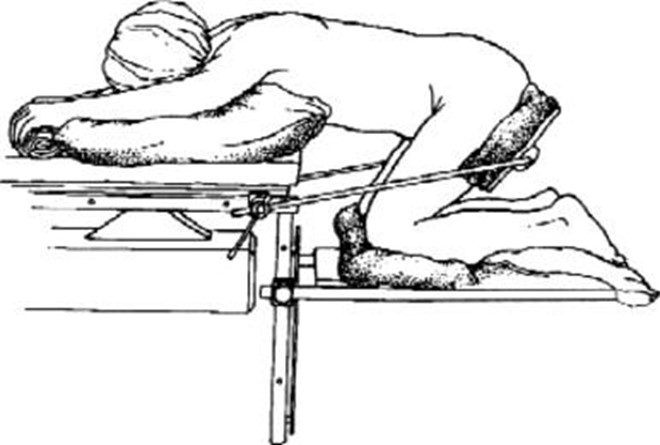A nurse is performing a vaginal exam on a client who is in active labor. The nurse notes the umbilical cord protruding through the cervix. Which of the following actions should the nurse take?
Administer oxytocin to the client via intravenous infusion.
Apply oxygen at 2 L/min via nasal cannula.
Prepare for insertion of an intrauterine pressure catheter.
Assist the client into the knee-chest position.
The Correct Answer is D
Choice A rationale:
Administering oxytocin to the client via intravenous infusion is not appropriate when the nurse notes an umbilical cord protruding through the cervix. The priority is to relieve pressure on the cord to prevent fetal compromise, and administering oxytocin could worsen the situation.
Choice B rationale:
Applying oxygen at 2 L/min via nasal cannula is not the priority when an umbilical cord prolapse is detected. The focus should be on relieving pressure on the cord and changing the client's position to alleviate the compression.
Choice C rationale:
Preparing for insertion of an intrauterine pressure catheter is not appropriate when there is an umbilical cord prolapse. The immediate concern is the potential compromise of fetal blood flow, and addressing the cord prolapse takes precedence over any other interventions.
Choice D rationale:

Assisting the client into the knee-chest position is the correct action when an umbilical cord prolapse is observed during a vaginal exam. This position helps to alleviate pressure on the cord by moving the presenting part of the fetus off the cord and can prevent further fetal distress until more definitive interventions can be performed.
Nursing Test Bank
Naxlex Comprehensive Predictor Exams
Related Questions
Correct Answer is A
Explanation
Choice A rationale:
Terbutaline is a medication commonly used to stop preterm labor by relaxing the uterine muscles. However, it is contraindicated in clients with heart disease or certain cardiac conditions, as it can cause cardiovascular side effects such as increased heart rate, palpitations, and potential arrhythmias.
Choice B rationale:
Cervical dilation of 2 cm is a typical sign of preterm labor, and the prescription for terbutaline is appropriate to prevent further cervical dilation and delay delivery.
Choice C rationale:
A gestational age of 34 weeks indicates preterm labor, which is precisely the scenario where terbutaline would be administered to halt labor progression and extend the pregnancy.
Choice D rationale:
Allergy to penicillin is unrelated to the administration of terbutaline, as they are different medications with distinct mechanisms of action and side effects.
Correct Answer is D
Explanation
Choice A reason:
"Retract the foreskin until you feel resistance." This advice is not recommended for newborns with an uncircumcised penis. The foreskin of most male babies doesn't yet pull back (retract) fully at birth, and forcing it back can cause pain, bleeding, and possible damage.
Choice B reason:
"Use a cotton swab to clean under the foreskin." This is not advisable for a newborn's uncircumcised penis. The foreskin is usually still attached to the glans and does not require any special cleaning inside. Using a cotton swab could potentially cause harm by forcing the foreskin back.
Choice C reason:
"Apply petroleum jelly to the foreskin." This instruction is more applicable to a circumcised penis during the healing process to prevent the penis from sticking to the diaper. For an uncircumcised penis, there's no need to apply petroleum jelly as part of regular care.
Choice D reason:
"Wash the penis once per day with soap and water." This is the correct care for an uncircumcised penis. Parents should gently wash the genital area with mild soap and water during bath time without retracting the foreskin.
Whether you are a student looking to ace your exams or a practicing nurse seeking to enhance your expertise , our nursing education contents will empower you with the confidence and competence to make a difference in the lives of patients and become a respected leader in the healthcare field.
Visit Naxlex, invest in your future and unlock endless possibilities with our unparalleled nursing education contents today
Report Wrong Answer on the Current Question
Do you disagree with the answer? If yes, what is your expected answer? Explain.
Kindly be descriptive with the issue you are facing.
